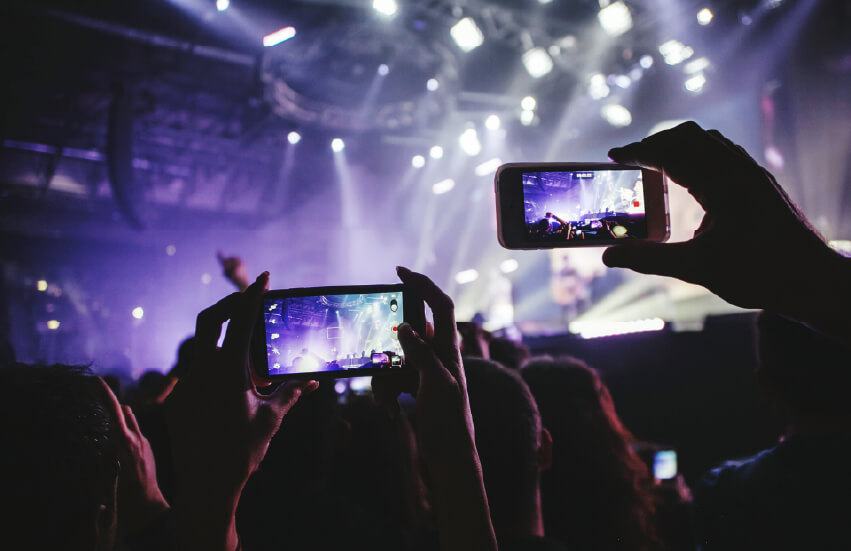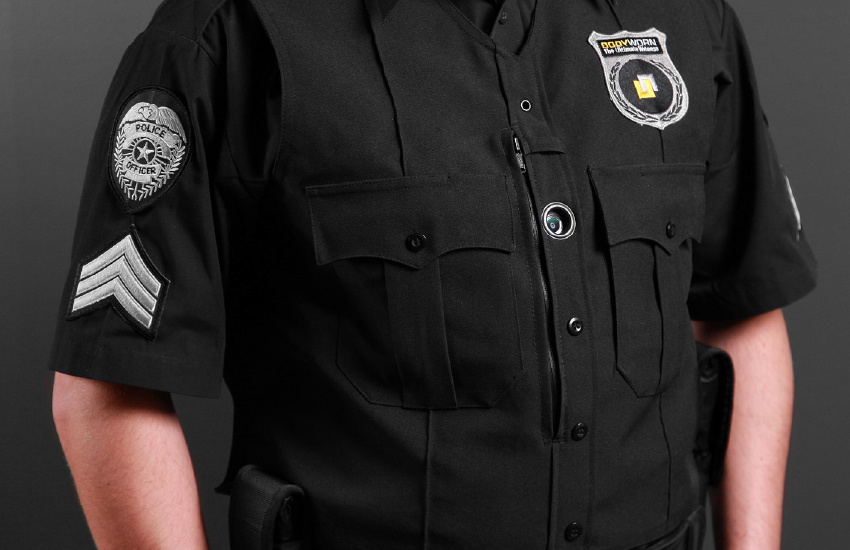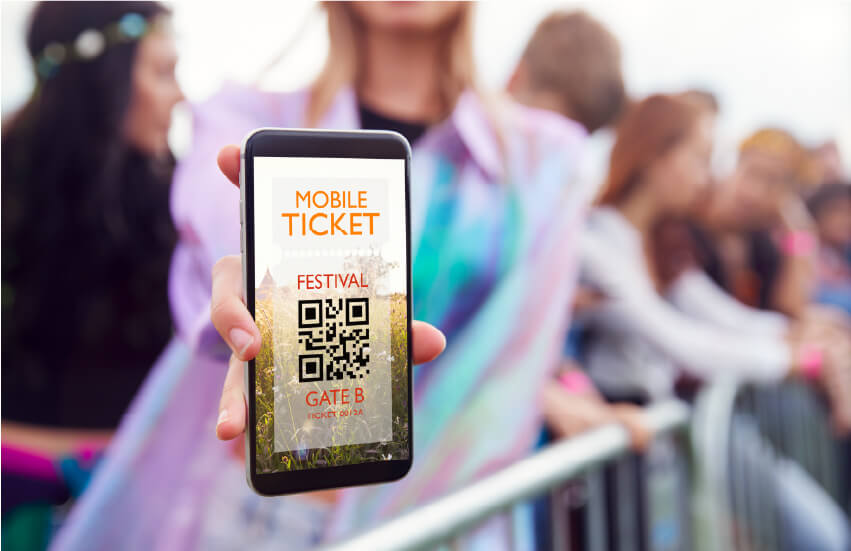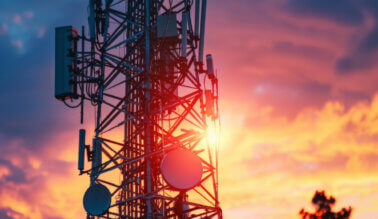Why live events depend on cellular connectivity
by Webbing Team | October 8, 2025
Packed stadiums and buzzy open-air festivals use cellular connectivity extensively. The amount of mobile data usage at events keeps growing, and operators publish big spikes and record totals each year. For example, this year Glastonbury’s data traffic usage was up by almost 25% from 2024.
Beyond enhancing the fan experience, cellular networks support safety, revenue, and many other critical applications from the gate to the stage. However, delivering that consistency is hard because live-event environments strain networks in ways typical sites don’t.

Connectivity Challenges at Live Events
There are several challenges that organizers of events of all kinds, both indoor and outdoor, are likely to face in terms of connectivity.
The first is network congestion. High-density gatherings create intense data traffic peaks at predictable moments such as entry, intermissions or headliner sets for open-air festivals, and exit. During these intervals, large numbers of personal devices simultaneously initiate uplink-heavy activity such as photo and video sharing, which competes with operational traffic from ticket scanners, POS terminals, cameras and security applications.
The second problem is most important for indoor events, where mobility may complicate performance. Devices must maintain service in stairwells, backstage, at parking lots and other locations where propagation is difficult and handovers are frequent. For open-air festivals, mobility and handovers still matter because attendees move between multiple temporary cells, while the physical obstructions are crowds and terrain rather than concrete walls.
Finally, venue networks must serve staff, vendors, and visitors, all with different connectivity requirements. Temporary installations, such as sponsor activations and ad-hoc work areas, add to variability and require specific capabilities that can be deployed without affecting current services.
Why Wi-Fi Alone is Insufficient
For outdoor events, connectivity challenges are often obvious because fixed lines may not exist, but what about indoor venues that already have Wi-Fi?
Wi-Fi performs well for stationary devices on a carefully engineered LAN. But it uses so-called contention-based access, a method where devices compete for the same airtime and must back off and retry when others transmit, so in crowds, interference and retries pile up and performance becomes unpredictable. This issue is amplified in dense environments with many access points and devices. Signal strength and quality also fall with distance from the access point and with obstacles such as concrete or metal structures.
In cellular networks, the base station schedules when each device can transmit, which keeps latency and throughput more predictable under load. Besides, cellular coverage is engineered to follow users as they move through the venue.
That said, Wi-Fi remains important. Many venues still run Wi-Fi for fan apps, with cellular link for mobility and essential workflows, like ticketing, POS, safety or media. Cellular connectivity is also used as a backup if the primary connection is lost.

Why eSIM is Important
To ensure sufficient coverage and bandwidth, operators usually deploy additional temporary radio masts at big outdoor events. These boosts help overall, but they don’t always help with the localized network congestion at certain moments.
eSIM based on eUICC technology with remote SIM provisioning gives organizers a practical way to circumvent these bottlenecks. With eSIM, devices can store multiple carrier profiles and switch to a less-loaded network when a nearby sector saturates.
While eSIM can’t create new spectrum, it provides control and continuity. It allows to separate critical and non-critical workflows by assigning different profiles and policies, and staff tools can switch between operators, manually or automatically.
Many applications relevant to events already benefit from cellular connectivity and eSIM capabilities. Broadcasting is a perfect example: many broadcasters already rely on multi-modem solutions that bond several eSIM-enabled links and automatically prefer whichever operator is healthiest in a certain spot. Another great example is retail, where cellular connectivity became a very popular option for POS systems.
But there are also use cases that are unique to events and venues. Let’s take a look at how they can benefit from using cellular connectivity and eSIM, and what their connectivity requirements are:
Ticketing and Access Control
Entry lines today depend on the cloud, and all barcode and NFC validation travels over IP. Large venues commonly use rugged Android handhelds for scanning, and modern ticketing handhelds are built with 5G/LTE connectivity for field use. Many current models even support eSIM, which allows IT teams to pre-stage all units and switch carriers remotely if needed. In addition, eSIM support removes the logistics of shipping and tracking SIM cards between events.
But there is more to cellular connectivity than just giving handheld scanners and smart turnstiles a stable uplink to the live ticketing system which might not be the easiest task when thousands of phones are also trying to connect. It also supports the rules behind them, including revocations, anti-passback, zone entitlements, fraud checks, timed entry, and dynamic capacity limits per gate or section. This allows operations teams to monitor ingress in real time or push policy changes mid-event, for example, opening overflow gates or redeploying staff.
Staff Coordination and Venue Operations
Behind the scenes, thousands of small tasks keep any event and venue running. Venues use cellular networks to keep staff communications with push-to-talk, VoIP, messaging, and tasking apps. It is critical because cellular is engineered for predictability under load and movement.
Besides, in venue operations, there are multiple building automation systems that rely on cellular networks, like HVAC, power and elevators. Facilities staff need to receive alarms from them, dispatch teams and track work orders; and duty managers view live staffing status and crowd flow indicators to redeploy teams quickly.

Security and Incident Response
A special case of staff communications is the use of cellular connectivity for safety and security purposes. Safety and security teams use cellular technology for reliable communication, and it also ensures situational awareness, with body-worn and fixed cameras streaming videos so command posts can see issues as they unfold.
At national-scale events, public-safety agencies may lean on networks for first responders e.g., FirstNet, which bring dedicated capacity to keep police, fire, and EMS connected inside and around stadiums. Some venues deploy on-site private cellular: for example, State Farm Stadium in Arizona deployed a CBRS LTE/5G network used for staff communications during Super Bowl operations.
Crowd Analytics and Environmental Monitoring
Festivals and stadiums increasingly use IoT devices and sensors to understand what is happening at their events. There are people-counting cameras and smartphone scanners that feed live crowd-flow metrics, some venues use air-quality, temperature, noise and power sensors that report environmental conditions. Cellular connectivity simplifies placement, since there is no need to extend Wi-Fi to a perimeter fence or temporary tower.
Temporary Internet
Trade shows and outdoor events often need quick internet for accreditation desks, production trailers, operation centers, or media rooms. Where fiber isn’t practical, a high-performance 4G or 5G router or a bonded modem can provide WAN in minutes, without trenching or venue rewiring.

Connectivity Requirements for Live Events
While security teams, POS terminals and IoT sensors may have very different demands in terms of connectivity, there are some common requirements for every device used at the event:
Coverage
Live events may span stages, stairwells, loading docks, perimeters, and parking areas, so connectivity must remain reliable across very different radio conditions while users are in motion. Consistent handovers and minimal dead zones are essential to keep voice, messaging, and operational apps usable end to end. Because some dead spots are inevitable in every carrier’s network, the ability to connect to multiple networks is critical.
Predictable Latency
Demand concentrates into intense bursts when uplink-heavy sharing overlaps with operational traffic. In these conditions, sufficient upstream capacity and stable latency determine whether time-sensitive communications arrive on time. In this context it’s important to remember that actual latency depends on your connectivity provider’s core network architecture, since data has to travel all the way to the provider’s data center before going to its destination.
Resilience and Operational Control
Events must continue operating despite localized congestion or shifting crowd patterns. Continuity depends on having ways to keep critical communications prioritized and to shift devices or traffic quickly when conditions change. Real-time visibility into traffic load and connectivity health is equally important, so teams can understand what’s happening on the ground and adapt without disrupting ongoing operations.

Webbing’s Solution
Webbing offers a connectivity solution that ensures global access to reliable and high-quality internet with low latency. It provides secure and continuous internet connection for all types of IoT devices at live events.
Webbing’s connectivity solutions guarantee global coverage, and through our ecosystem of over 600 mobile operators worldwide, devices can roam seamlessly across multiple carriers’ networks in every region. It solves the problem of weak spots that any mobile network may have and ensures full coverage and continuous connectivity for all devices, even at remote locations.
Our eSIM solution, WebbingCTRL, ensures failover connectivity with the capability of using multiple mobile carrier profiles, easily switching carriers at any time with zero integration, and an option to fall back from a failing profile to a different profile without any need to communicate with a remote server.
WebbingCTRL enables organizations to remotely add, remove, and swap operators for any number of devices immediately without operator integration or collaboration. It also provides a centralized way to manage eSIMs/SIMs lifecycle and profile inventory, as well as visibility into device data usage. Companies can set up business rules that would allow devices to change the serving operator automatically under specific conditions, such as location, country, loss of connectivity or even after a certain amount of time. Webbing’s eSIM is aligned with the GSMA SGP.32 IoT eSIM specification. The WebbingCTRL platform can work with both SGP.32 and SGP.22 standards and also supports M2M devices for relevant use cases. It provides a single pane of glass to manage all devices deployed regardless of standards used.
More than 1 million WebbingCTRL eSIMs/SIMs have already been deployed globally. Our eSIM cards have helped organizations across various industries benefit from cellular connectivity at various live events: for example, to streamline logistics and reduce expenses for live broadcasting of the 2023 G20 Summit, or to connect almost 1900 devices facilitated in broadcasting events and competitions at the Paris Olympics in 2024.
Webbing’s distributed core network with local breakouts, multiple network solution, and data server redundancy provides connectivity stability and low latency. It also allows to easily comply with local regulators’ requirements and helps to adapt to any changes in legislation. Besides, it gives enterprises the ability to quickly scale their deployments or adjust their existing device management to any business scenarios.
Moreover, a flexible approach to data packages allows us to tailor our connectivity offering for every customer based on the type of connected devices and their data consumption needs as well as the locations where the devices are used, aiming at overall optimization of the total cost of operations for the client.
Contact us today to learn how Webbing’s eSIM and global connectivity solution can help you connect any type of device at live events securely, reliably and at scale.





